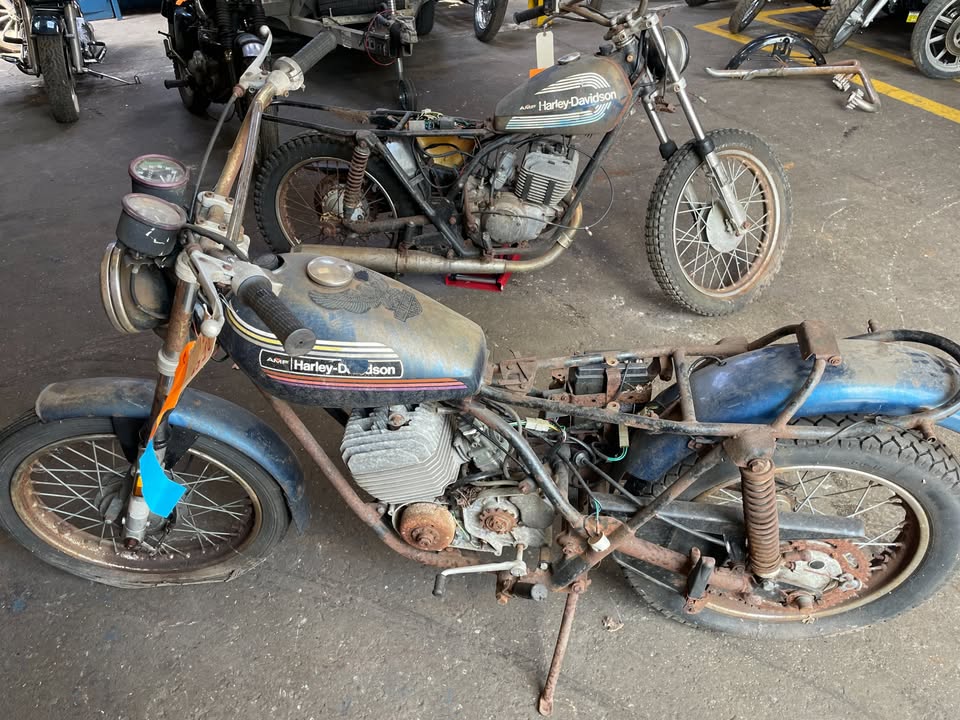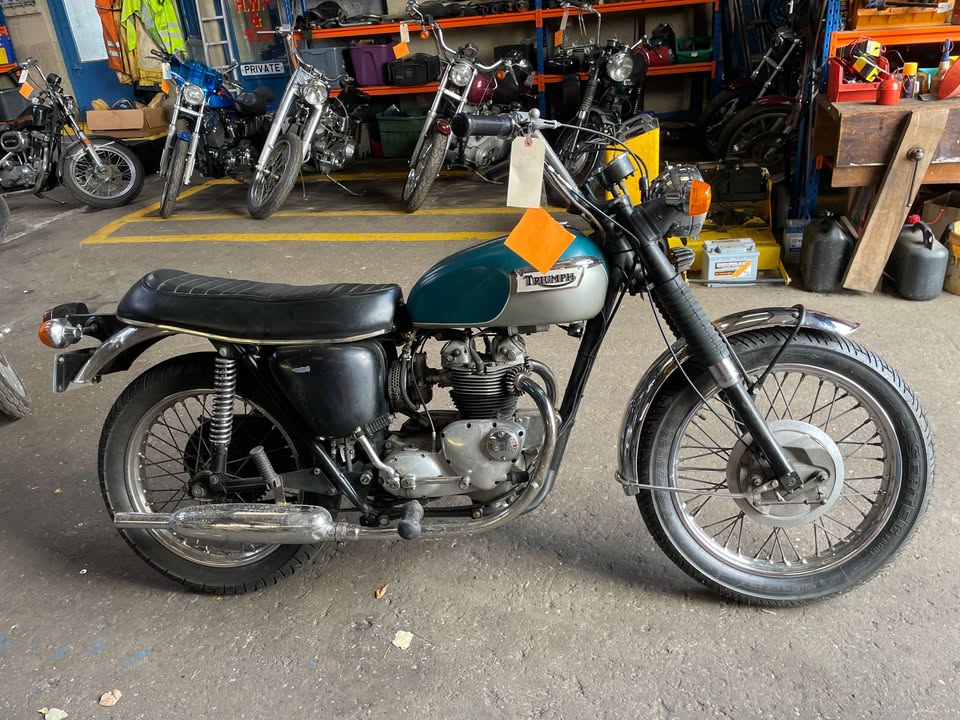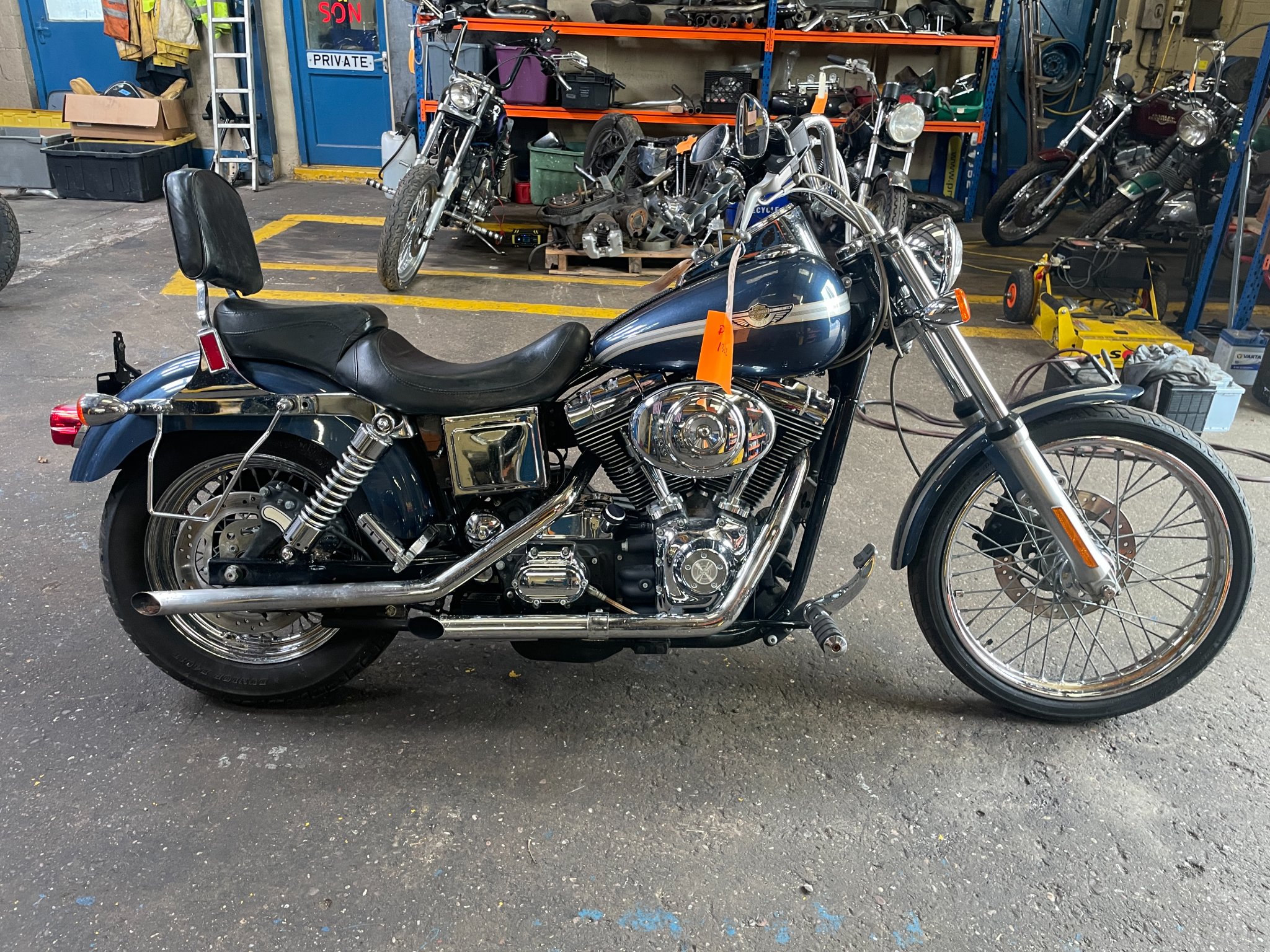Classic and Classy Motorcycles Ltd
Vintage and Classic Motorcycle Importers
1974 and a 1976 Harley Davidsons SX 175 cc Project Barn Finds 2 Bikes

1974 & 1976 Harley-Davidson SX175 – Dual Barn-Find Two-Stroke Trail Bikes from the AMF Era
Historical Context
The Harley-Davidson SX175 was introduced in the early 1970s during the AMF years, a time when Harley sought to expand its offerings beyond heavyweight V-twins. In collaboration with Italian manufacturer Aermacchi, Harley-Davidson brought in small-displacement two-stroke enduro bikes to compete with the rising popularity of lightweight dual-sport motorcycles. The SX175 was one of several trail-oriented models produced between 1973 and 1976, designed to provide reliable off-road capability with street-legal functionality. Both the 1974 and 1976 versions were part of this lineup and shared many core features, with only minor refinements over the production years.
Technical Specifications and Performance
• Years: 1974 & 1976
• Make: Harley-Davidson (Aermacchi)
• Model: SX175
• Engine Displacement: 173cc
• Engine Type: Single-cylinder, two-stroke
• Cooling System: Air-cooled
• Carburetion: Dell'Orto carburetor
• Ignition System: Magneto ignition
• Transmission: 5-speed manual
• Braking System: Drum brakes front and rear
• Fuel Capacity: Approx. 2.3 gallons
• Top Speed: Around 60–65 mph
• Dry Weight: Approximately 225 lbs
Technical Advancements
Though basic in design, the SX175 incorporated some practical engineering for the time. The 5-speed transmission gave it flexible gearing for both trail and road use, while the engine used a rotary valve intake system for better power delivery across the RPM range. The chassis used a double-cradle frame with long-travel suspension and full knobby tires, suited for light trail duty. Both models retained traditional drum brakes, simple electrics, and rugged construction that made them ideal entry-level enduros.
Evolution and Model Differences
Between 1974 and 1976, the SX175 saw only minor cosmetic and mechanical updates. The core engine and frame remained the same. Later versions, such as the 1976 model, featured minor improvements in suspension tuning and ignition reliability. Paint schemes and decals also varied slightly between the years. Both bikes shared the high-mounted exhaust pipe and slim gas tank that defined the SX aesthetic.
Competitors and Market Position
The SX175 was aimed at riders who might otherwise have bought a Yamaha DT175, Suzuki TS185, or Kawasaki KE175. Japanese rivals often featured newer technology like oil injection and more refined suspension. However, Harley's offering stood out for its European build quality (courtesy of Aermacchi) and its distinctive American branding. While it didn’t outperform its competitors, the SX175 offered a strong value for amateur riders and Harley loyalists looking for a lightweight trail machine.
Legacy and Collectibility
Today, the SX175 is a rare and interesting part of Harley-Davidson’s history. It represents a brief period when the company explored the off-road market through international partnerships. Barn-find examples like the 1974 and 1976 models are desirable among collectors and restorers for their uniqueness and nostalgic charm. These bikes, when restored, serve as a reminder of Harley’s brief foray into small-displacement trail riding—a curious but important chapter in the brand’s story.
Find Classic Motorcycles
Stay in the loop - Subscribe for Updates
One email notification a month when a new shipment arrives.
 1971-Triumph-500cc-T100c-Tiger-Ref-1561
1971-Triumph-500cc-T100c-Tiger-Ref-1561 2003-Harley-Davidson-Anniversary-Dyna-Wide-Glide-FXDWG-1450cc-Ref-D1322
2003-Harley-Davidson-Anniversary-Dyna-Wide-Glide-FXDWG-1450cc-Ref-D1322